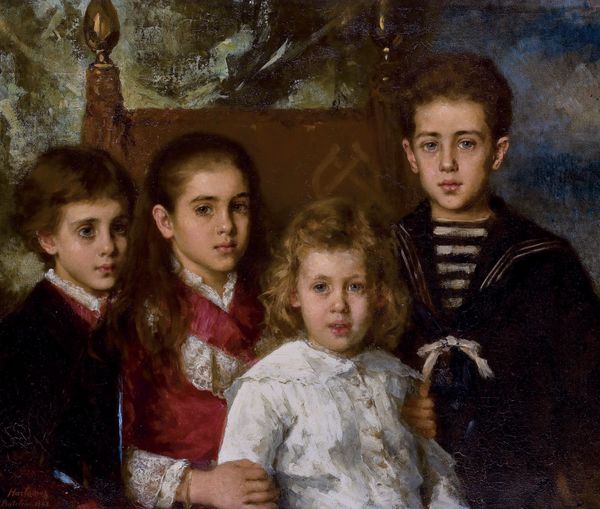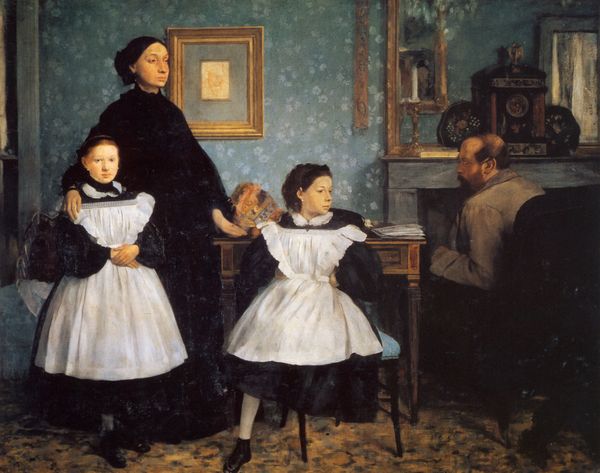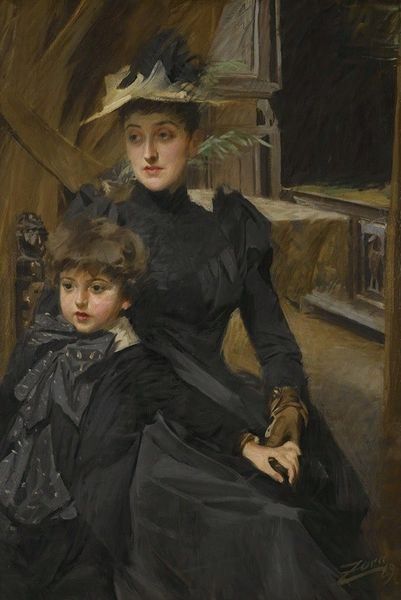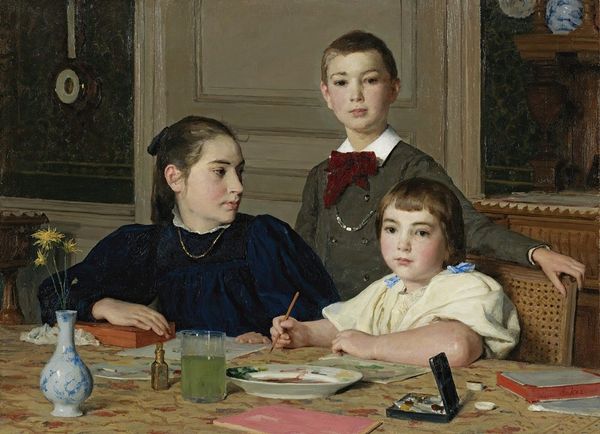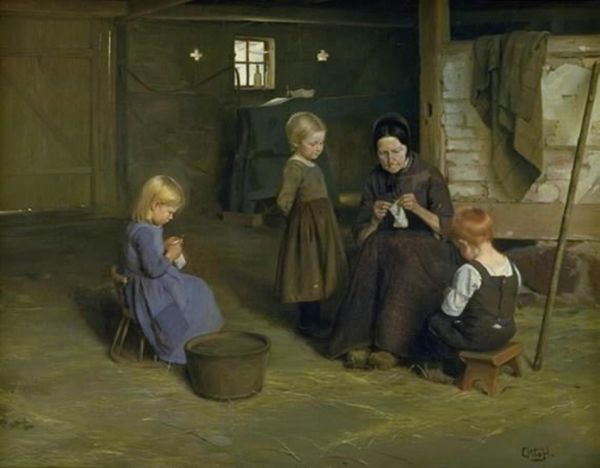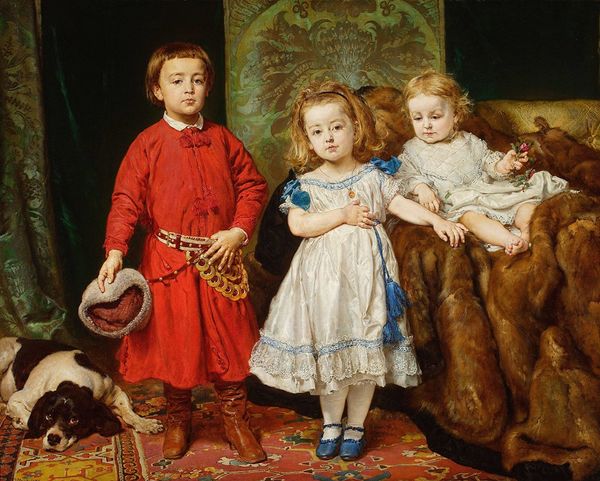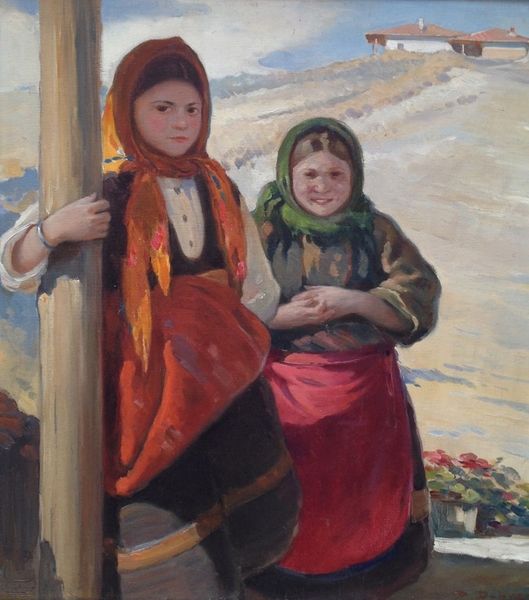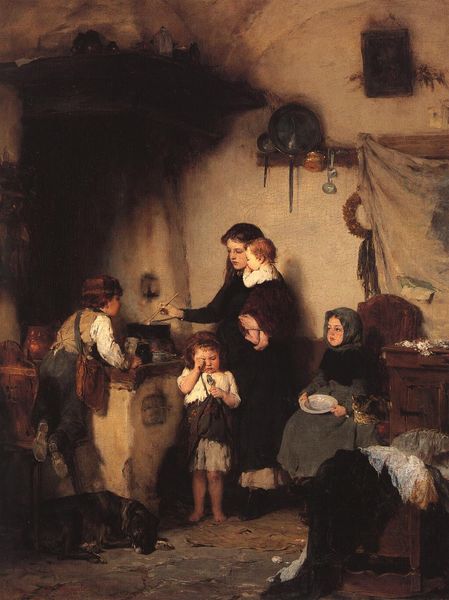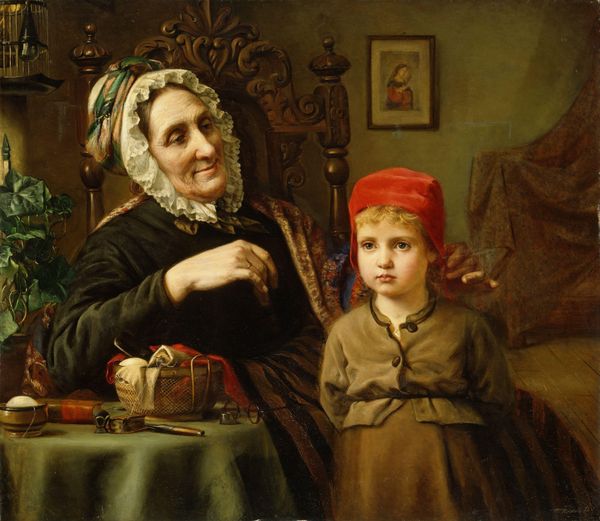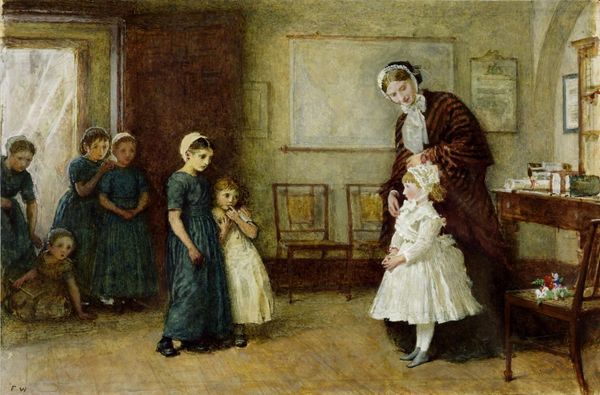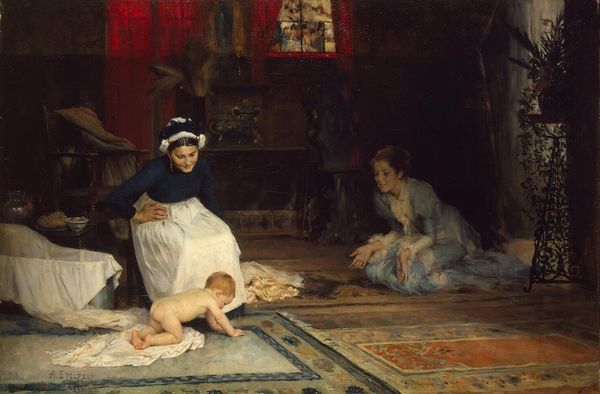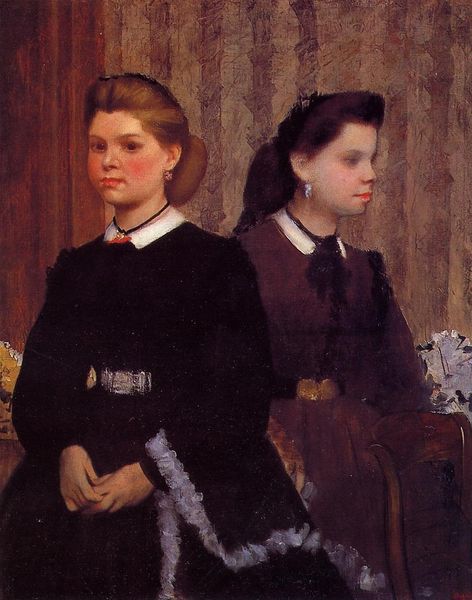
Dimensions: height 43 cm, width 35 cm, depth 7 cm
Copyright: Rijks Museum: Open Domain
Curator: August Allebé painted “Early to Church” in 1861, here at the Rijksmuseum. It's an oil painting depicting a group of people inside a church. Editor: It's overwhelmingly dark, isn't it? The almost monochromatic palette seems fitting, given the solemnity of the setting and perhaps the social restrictions of the time on color. Curator: Indeed. We might consider this in the context of 19th-century expectations of piety and the role of women in religious observance, how the subdued tones reinforce this. It is difficult not to see how gender, faith, and even social status become entangled. Editor: But look closer at how Allebé built this composition; how the dark clothes act as material signs, contrasting with their faces. Notice also the subtle difference in how clothing textures might subtly reveal the social hierarchy inside this small religious society. Curator: Good point. Think too of the societal pressures within these communities – what did it mean for women of different ages and social classes to participate? Allebé really opens this up. This almost feels like a commentary of Dutch society at this point. Editor: Agreed, these portraits do engage critically with ideas around representation. Even within these limitations, we see Allebé emphasizing the materiality of paint to communicate social meanings. It looks like this has a somber affect and allows viewers to read their own social anxieties on it. Curator: Thinking intersectionally about faith, class, and gender can really enrich the viewer's understanding of works like this one. How people use their artmaking processes to speak their experience. Editor: Exactly. By examining the materiality and the historical backdrop, we appreciate not only the artist’s skills but also how they engaged critically with their world through the material they handled and processed. Curator: These quiet genre paintings, like "Early to Church," open avenues into understanding 19th century Dutch social structures and their intersections with personal expression. Editor: For me, I feel the strength of this painting, lies within in its ability to invite us into Allebé’s studio and the subtle way he used his knowledge to make his social observation through this simple set of dark and gray hues.
Comments
No comments
Be the first to comment and join the conversation on the ultimate creative platform.
